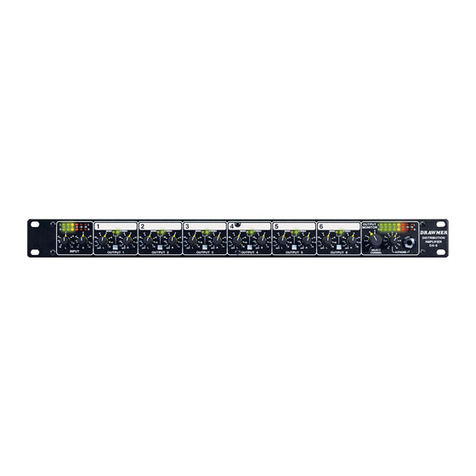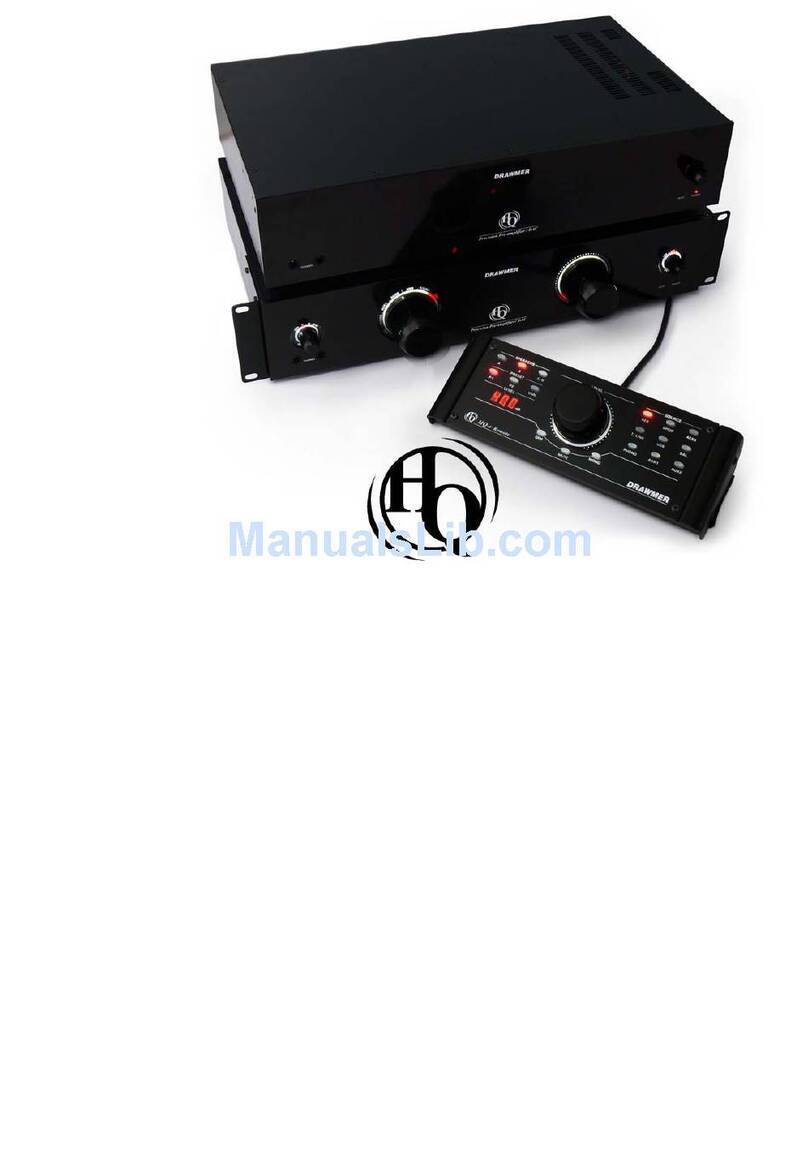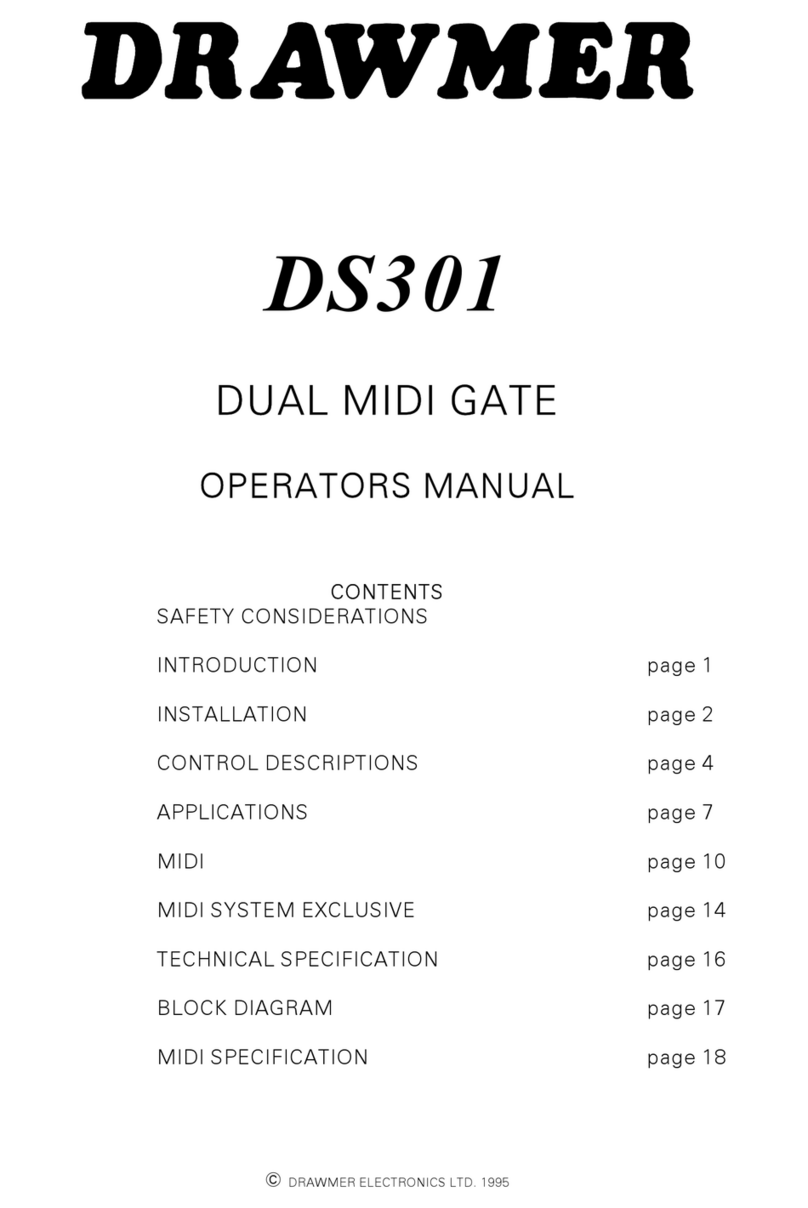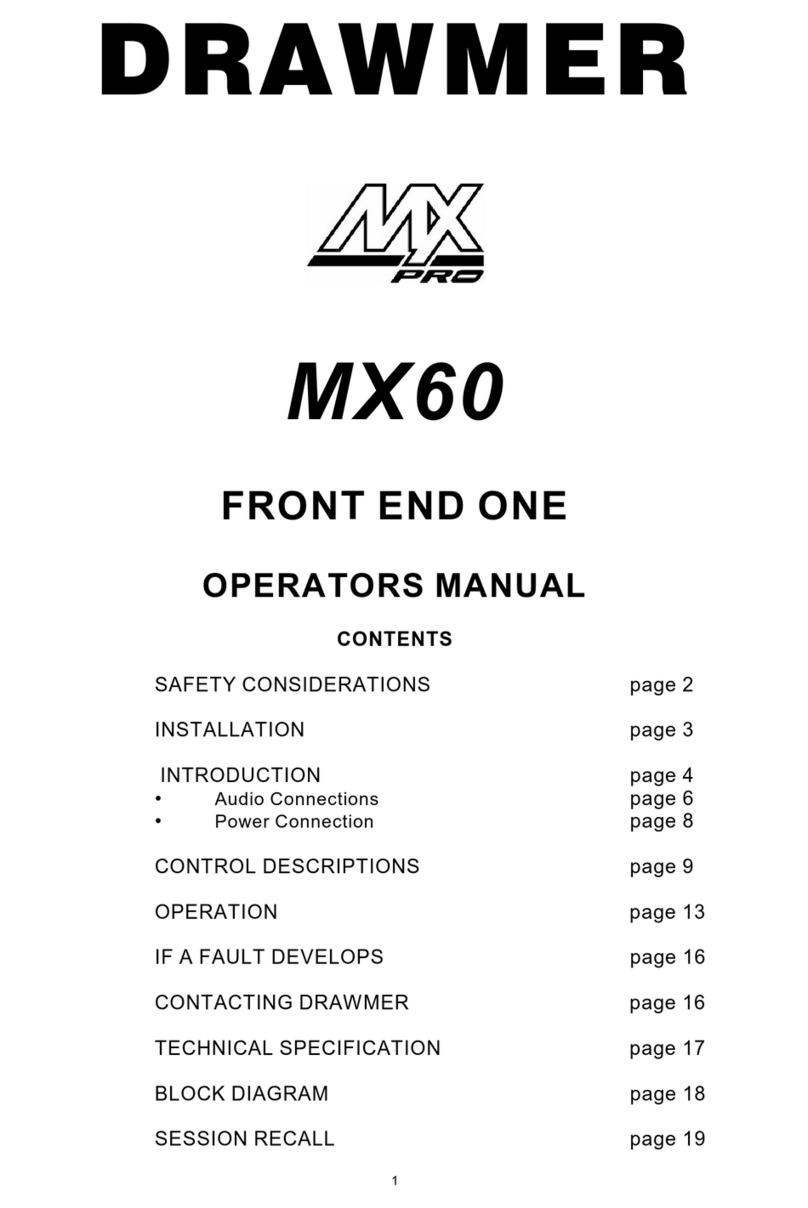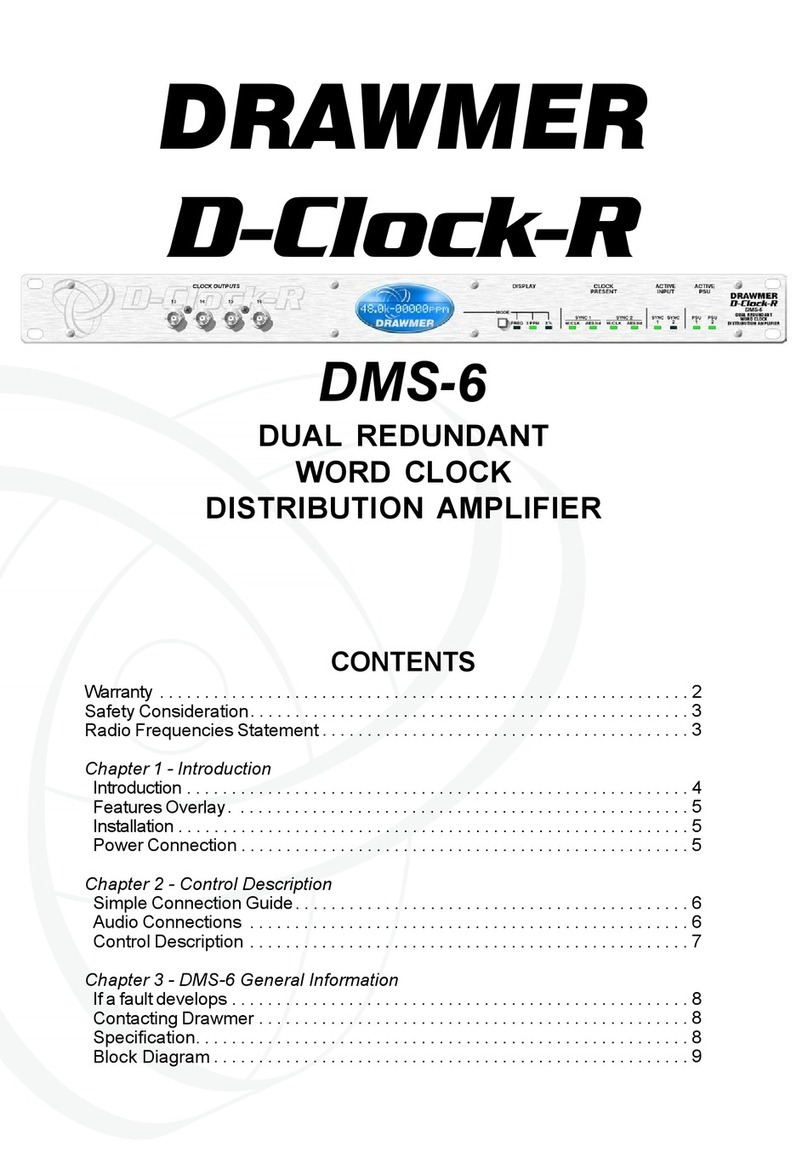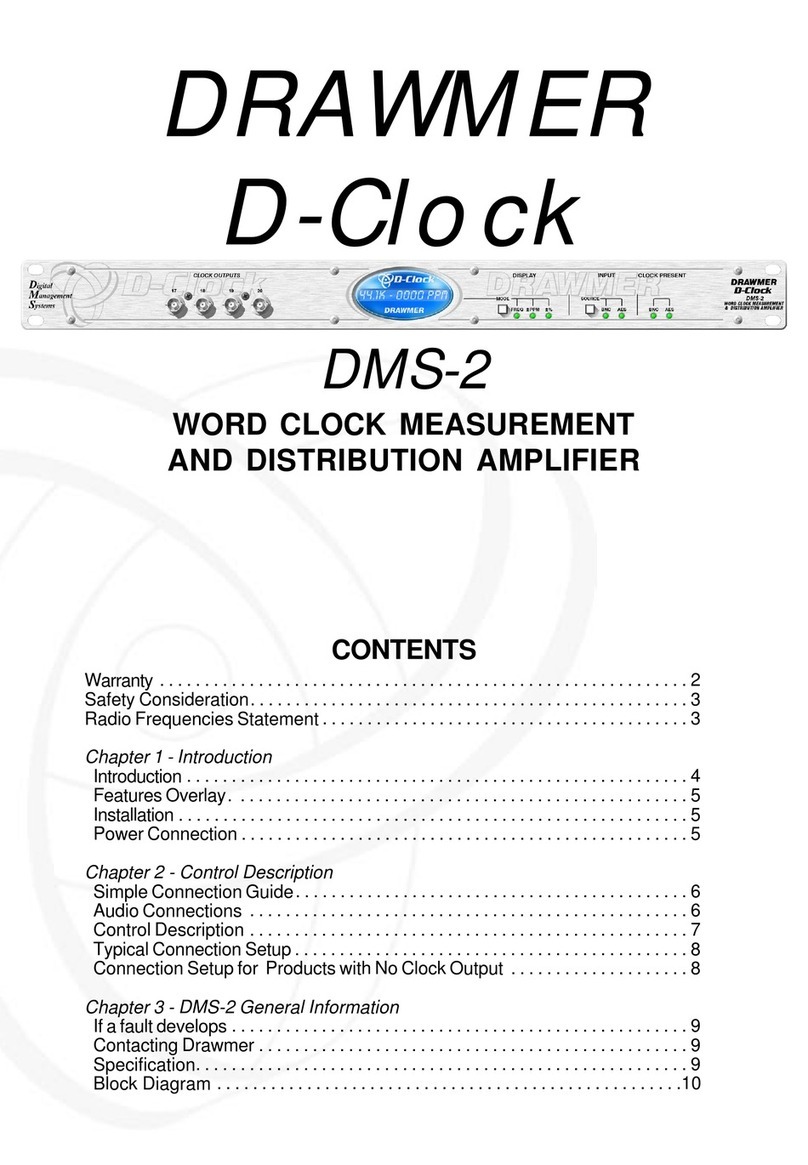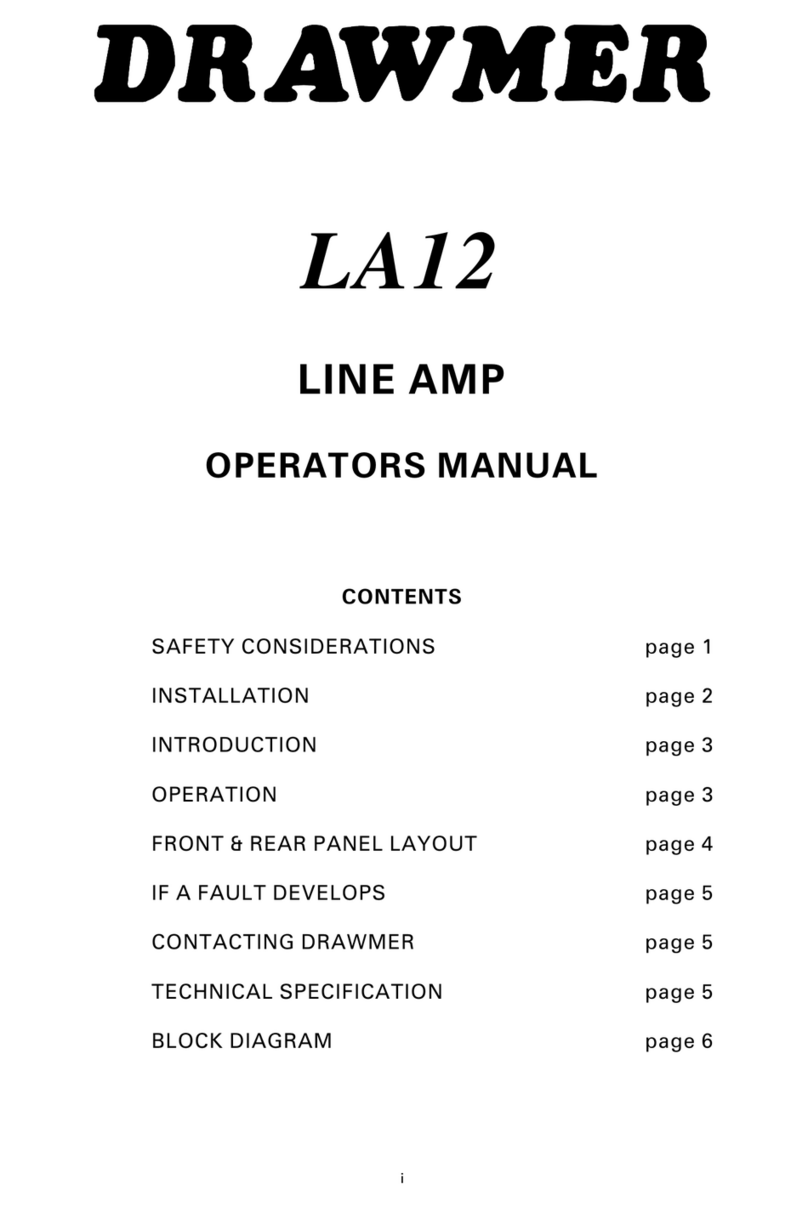
2DRAWMER 1972 OPERATOR’S MANUAL
Drawmer Electronics Ltd., warrants the Drawmer 1972
Dual Mic/Line/Instrument Pre-Amplifier to conform
substantially to the specications of this manual for a period
of one year from the original date of purchase when used in
accordance with the specications detailed in this manual.
In the case of a valid warranty claim, your sole and exclusive
remedy and Drawmer’s entire liability under any theory of
liability will be to, at Drawmer’s discretion, repair or replace
the product without charge, or, if not possible, to refund the
purchase price to you. This warranty is not transferable. It
applies only to the original purchaser of the product.
For warranty service please call your local Drawmer dealer.
Alternatively call Drawmer Electronics Ltd. at +44 (0)1709
527574. Then ship the defective product, with transportation
and insurance charges prepaid, to Drawmer Electronics
Ltd., Coleman Street, Parkgate, Rotherham, S62 6EL
UK. Write the RA number in large letters in a prominent
position on the shipping box. Enclose your name, address,
telephone number, copy of the original sales invoice and a
detailed description of the problem. Drawmer will not accept
responsibility for loss or damage during transit.
This warranty is void if the product has been damaged by
misuse, modication or unauthorised repair.
THIS WARRANTY IS IN LIEU OF ALL WARRANTIES,
WHETHER ORAL OR WRITTEN, EXPRESSED,
IMPLIED OR STATUTORY. DRAWMER MAKES NO
OTHER WARRANTY EITHER EXPRESS OR IMPLIED,
INCLUDING, WITHOUT LIMITATION, ANY IMPLIED
WARRANTIES OF MERCHANTABILITY, FITNESS FOR
A PARTICULAR PURPOSE, OR NON-INFRINGEMENT.
PURCHASER’S SOLE AND EXCLUSIVE REMEDY
UNDER THIS WARRANTY SHALL BE REPAIR OR
REPLACEMENT AS SPECIFIED HEREIN.
IN NO EVENT WILL DRAWMER ELECTRONICS LTD.
BE LIABLE FOR ANY DIRECT, INDIRECT, SPECIAL,
INCIDENTAL OR CONSEQUENTIAL DAMAGES
RESULTING FROM ANY DEFECT IN THE PRODUCT,
INCLUDING LOST PROFITS, DAMAGE TO PROPERTY,
AND, TO THE EXTENT PERMITTED BY LAW, DAMAGE
FOR PERSONAL INJURY, EVEN IF DRAWMER HAS
BEEN ADVISED OF THE POSSIBILITY OF SUCH
DAMAGES.
Some states and specific countries do not allow the
exclusion of implied warranties or limitations on how long
an implied warranty may last, so the above limitations may
not apply to you. This warranty gives you specic legal
rights. You may have additional rights that vary from state
to state, and country to country.
In the interests of product development, Drawmer reserve the right to modify or
improve specications of this product at any time, without prior notice.
ONE YEAR LIMITED WARRANTY
COPYRIGHT
This manual is copyrighted © 2022 by Drawmer Electronics Ltd. With all rights reserved. Under copyright
laws, no part of this publication may be reproduced, transmitted, stored in a retrieval system or translated
into any language in any form by any means, mechanical, optical, electronic, recording, or otherwise, without
the written permission of Drawmer Electronics Ltd.
DRAWMER
1972
Dual Mic, Line &
Instrument Pre-Amplier
SAFETY CONSIDERATIONS
CAUTION - MAINS FUSE
TO REDUCE THE RISK OF FIRE
REPLACE THE MAINS FUSE ONLY WITH
A FUSE THAT CONFORMS TO IEC127-2.
250 VOLT WORKING, TIME DELAY TYPE
AND BODY SIZE OF 20mm x 5mm.
THE MAINS INPUT FUSE MUST BE
RATED AT 230V=T160mA and 115V=T315mA.
CAUTION - MAINS CABLE
DO NOT ATTEMPT TO CHANGE
OR TAMPER WITH THE
SUPPLIED MAINS CABLE.
CAUTION - SERVICING
DO NOT PERFORM ANY SERVICING.
REFER ALL SERVICING TO QUALIFIED
SERVICE PERSONNEL.
WARNING
TO REDUCE THE RISK OF FIRE OR
ELECTRIC SHOCK DO NOT EXPOSE
THIS EQUIPMENT TO RAIN OR MOISTURE.


